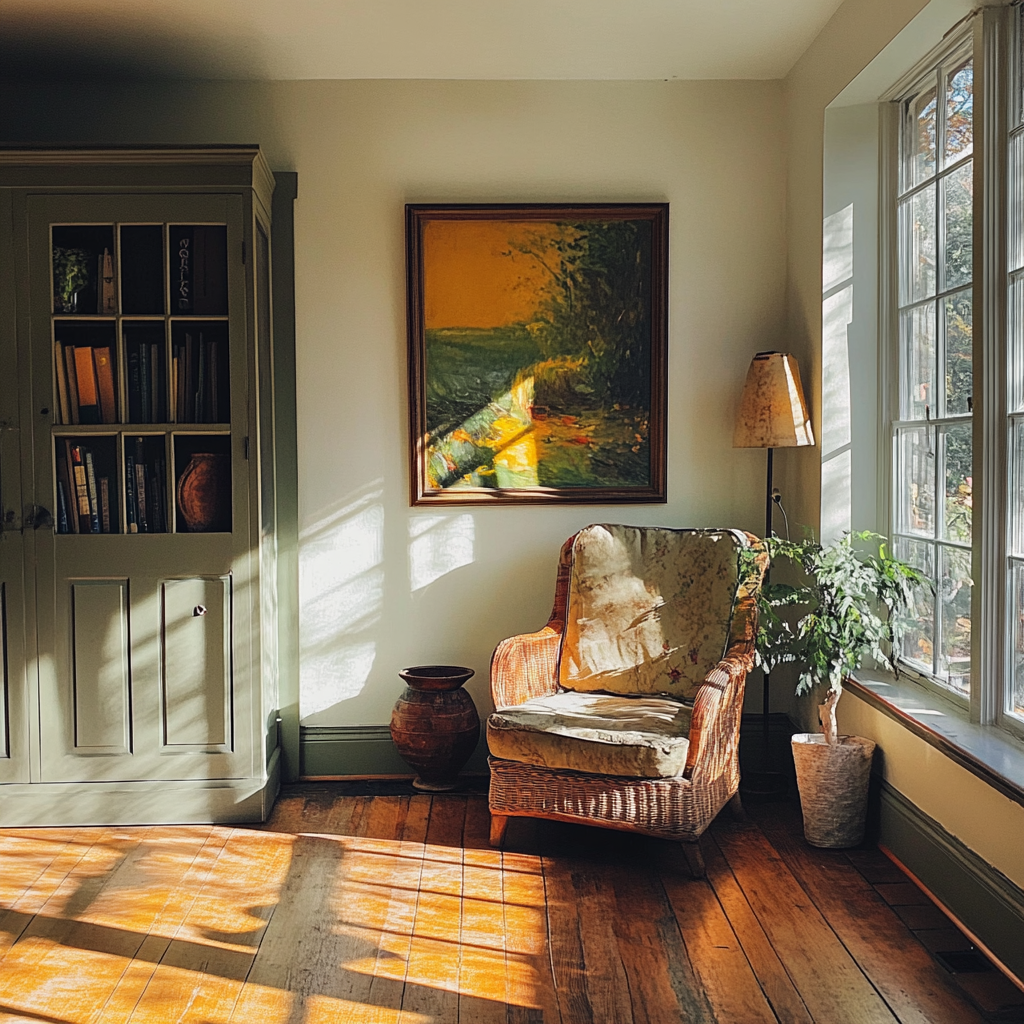How To Protect Your Art from Sunlight



Direct sunlight and scorching temperatures can cause issues and problematic implications for your art. The culprits in the equation are the ultraviolet rays.
Watercolor paintings, as well as other works on paper, are susceptible to fading and color bleaching. However, acrylic and oil paintings, although made with harder pigments, are also at risk when exposed to bright sunlight for long periods of time. Certain types of sculptures, such as wood, should also be treated with care.
Below are some essential tips on how to care for your art and what to do to protect it from the damaging effects of sunlight.
Six Steps You Can Take to Protect Your Art From Sun Exposure

1. Avoid Sun Exposure Altogether
While it can be challenging to limit sunlight exposure, taking necessary precautions is essential to protecting your paintings. Make sure you hang your art away from windows and areas in your house with less light. Use curtains or shades during peak sunlight hours to protect your art pieces.
2. Periodically Rotate Your Art
While the most common way to prevent damage from sunlight and UV rays is to avoid them altogether, this isn't always practical. One way to mitigate the impact of an overabundance of natural light is to rotate your art collection periodically.
If some of your collections are in storage, bring them out for display and give your other pieces a temporary rest. It is a great way to keep your art protected and your home fresh.
3. Mitigate Temperature Fluctuations

This is a pretty simple tip. Keep the temperature in your home regulated so as not to expose your artwork to extreme heat or cold. The optimal temperature to avoid damage to your acrylic or oil paintings is around 16-26 degrees Celsius.
4. Use High-Quality Framing Materials

Framing your art with high-quality archival materials is among the best ways to combat the effects of sunlight exposure.
With this in mind, the first step is to seek a professional framing service. Make sure to hire someone who uses archival materials such as acid-free paper and matting. There is a range of options when it comes to the glass you can select to overlay your artwork, with museum glass being the most resistant to UV rays. You can also choose to protect your art with UV-filtering acrylic plexiglass.
Educate yourself about which types of varnish and sealants to apply to your oil and acrylic paintings if you are going to hang them unframed. If you're uncertain whether the protection you used is adequate, ask a professional to determine if additional treatment to your artwork is advisable and necessary.
5. Use Care When You Store Art
Temperature and humidity are key factors in safely maintaining your stored artwork. Prep your art pieces using acid-free print boxes or other protective packaging from conservation suppliers before storing them. Place your artwork in a cool, dry, and dark place. Keep them separated and, whenever possible, lay your art flat.
6. Add A Protective Layer to Windows
Now that you've strategically placed, rotated, and framed your paintings, there is one additional step you might not have considered. In addition to direct protective applications to the paintings, you can also filter out damaging UV light by putting a UV film on your windows. 3M makes a reliable product, and there are options on Amazon as well. This extra UV protection is great if you have unframed artwork or exposed canvas.
Bonus Tips For Taking Care Of Your Art
Use LED Lighting
This artificial light emits minimal UV radiation and generates very little heat. By switching to LED lighting, you can highlight your artwork without the risk of fading or damage caused by excessive heat or sunlight exposure.

Clean And Dust Regularly
Dust and dirt over your varnishes of glass frames can degrade your artwork over time. Use a microfiber cloth to clean your frames and glass and a soft brush for your artwork. For delicate pieces, consider hiring a professional to make sure your art stays protected.
Keep Your Art Away From Artificial Ventilation
Avoid hanging your artwork near ventilation systems, such as air vents, radiators, and air conditioning units. They can cause uneven temperature and humidity conditions, making your artwork fade, warp, or crack over time.
Final Thoughts
We hope these tips help you protect your treasured artwork from sunlight and other damaging elements. Taking proactive steps now will not only extend the overall health of your pieces but also maintain their beauty and value.
Looking to add to your collection of original art? You can check our selection with new art posted weekly. Happy decorating!





